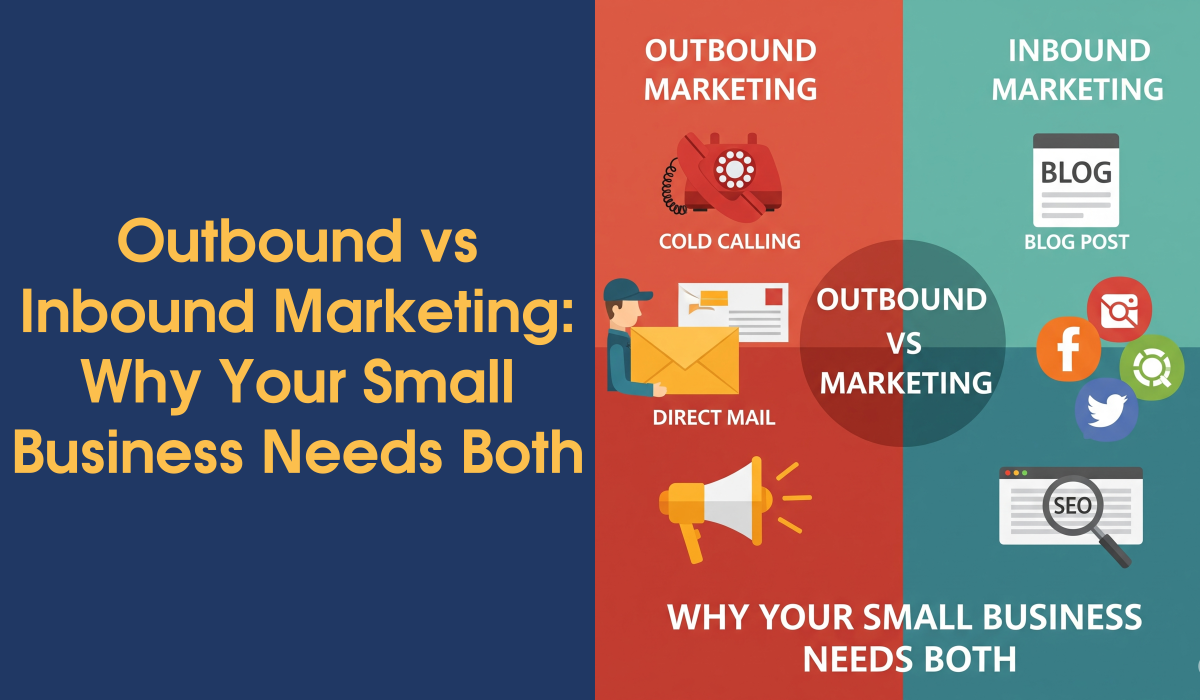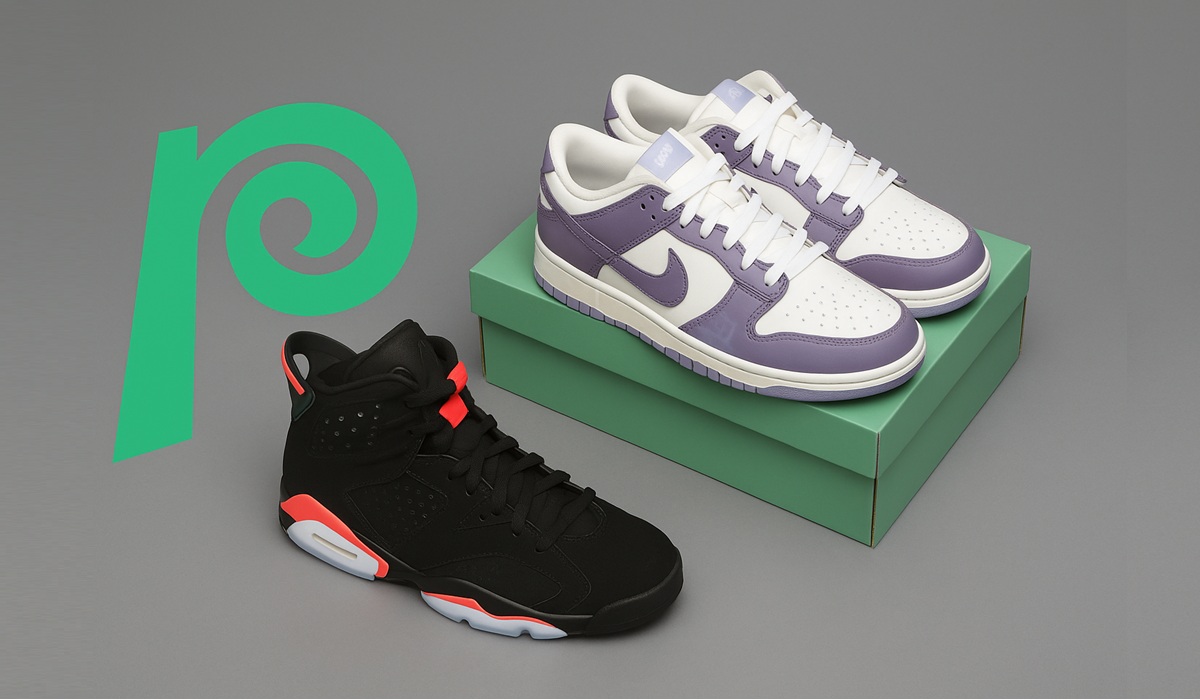Outbound vs Inbound Marketing: Why Your Small Business Needs Both
- Kevin Toney - the Marketing Coach
- Business
- June 24, 2025

Outbound vs Inbound Marketing: Why Your Small Business Needs Both
The Marketing Myth That’s Costing You Customers
Picture this: You’re at a networking event, and two business owners are having a heated debate. One swears by cold calling and direct mail, claiming “traditional marketing built my business.” The other rolls their eyes and talks about content marketing and SEO, insisting “inbound is the only way to go in today’s digital world.”
Sound familiar? This either-or mentality is one of the biggest mistakes small business owners make with their marketing. The truth is, the most successful businesses don’t choose between outbound and inbound marketing – they master both.
If you’re limiting yourself to just one approach, you’re leaving money on the table and missing out on potential customers who could transform your business.
Why the Outbound vs Inbound Debate Matters More Than You Think
The Cost of Choosing Sides
When small business owners treat marketing like a boxing match – outbound versus inbound – they create unnecessary limitations that hurt their growth potential. Here’s what happens when you go all-in on just one approach:
Outbound-Only Businesses often struggle with:
- Higher customer acquisition costs over time
- Difficulty building long-term relationships
- Challenges with modern consumers who research before buying
- Limited ability to track and measure results effectively
Inbound-Only Businesses frequently face:
- Slower initial growth and lead generation
- Difficulty reaching customers who aren’t actively searching
- Longer sales cycles that can strain cash flow
- Missed opportunities with prospects who need immediate solutions
The Numbers Don’t Lie
Research shows that companies using both inbound and outbound strategies see 38% higher lead conversion rates than those using just one approach. Additionally, businesses that integrate both methods report 24% faster revenue growth compared to single-strategy competitors.
The Smart Solution: Building Your Integrated Marketing Engine
The most effective small business marketing strategies combine the immediate impact of outbound marketing with the long-term value of inbound marketing. Here’s how to make both work for your business:
Start with Your Foundation: Inbound Marketing
Think of inbound marketing as building the infrastructure for long-term success. This approach focuses on attracting customers through valuable content and experiences tailored to their needs.
Essential Inbound Strategies:
- Create helpful blog content that answers your customers’ questions
- Optimize your website for search engines (SEO)
- Develop valuable lead magnets like guides or checklists
- Build an email list and nurture relationships over time
- Engage authentically on social media platforms where your customers spend time
Add Fuel to the Fire: Outbound Marketing
Outbound marketing gives you control over when and how you reach potential customers. It’s your accelerator for faster results and immediate market penetration.
Effective Outbound Tactics:
- Strategic cold outreach via email or phone
- Targeted direct mail campaigns
- Networking events and trade shows
- Partnership and referral programs
- Paid advertising on relevant platforms
The Integration Sweet Spot
The magic happens when these approaches work together. Use outbound tactics to drive traffic to your inbound assets, and leverage inbound content to warm up your outbound prospects.
Outbound vs Inbound: Understanding the Key Differences
Timing and Control
Outbound Marketing:
- You control when and where your message appears
- Immediate results possible
- Interrupts prospects during their daily activities
- Works well for time-sensitive offers
Inbound Marketing:
- Prospects find you when they’re ready
- Builds momentum over time
- Provides value before asking for anything
- Creates lasting relationships
Cost Structure
Outbound Marketing:
- Higher upfront costs but faster results
- Costs typically increase with scale
- Easier to budget and predict expenses
- ROI can be measured quickly
Inbound Marketing:
- Lower ongoing costs but requires time investment
- Becomes more cost-effective over time
- Harder to predict immediate returns
- Compounds in value as content ages
Customer Experience
Outbound Marketing:
- Reaches people who may not know they need your solution
- Can feel pushy if not done thoughtfully
- Works well for urgent or new problems
- Effective for breaking through noise
Inbound Marketing:
- Attracts people already interested in solutions
- Builds trust through helpful information
- Feels less sales-y and more educational
- Creates advocates and repeat customers
Real-World Success: How Smart Businesses Use Both
Case Study: Local HVAC Company
Sarah’s heating and cooling business struggled with seasonal ups and downs. She implemented a dual approach:
Inbound Strategy:
- Created a blog with seasonal maintenance tips
- Developed a “Home Energy Efficiency Checklist” as a lead magnet
- Optimized her website for local searches like “furnace repair near me”
Outbound Strategy:
- Sent targeted direct mail postcards before peak seasons
- Implemented a referral program with existing customers
- Partnered with local real estate agents for new homeowner leads
Results: Within 18 months, Sarah’s business grew by 45%, and she reduced her customer acquisition cost by 30% while building a sustainable pipeline of warm leads.
Case Study: Professional Services Firm
Mike’s accounting practice wanted to move beyond referrals to scale his business:
Inbound Strategy:
- Published weekly tax tips on LinkedIn and his website
- Created downloadable tax planning guides for different business types
- Started a monthly email newsletter with financial insights
Outbound Strategy:
- Attended local business networking events consistently
- Launched a strategic LinkedIn outreach campaign
- Developed partnerships with business attorneys and financial advisors
Results: Mike doubled his client base in two years while positioning himself as the go-to expert for small business financial guidance.
Your Action Plan: Getting Started with Integrated Marketing
The key to success isn’t choosing between outbound and inbound marketing – it’s understanding how to make them work together for your specific business goals.
Start by asking yourself:
- Where are your ideal customers when they’re ready to buy?
- What problems do they have that you can solve?
- How can you reach them both when they’re searching and when they’re not?
Then take action:
- Audit your current marketing efforts to identify gaps
- Choose one inbound and one outbound strategy to test
- Create systems to track what’s working and what isn’t
- Gradually expand successful tactics while eliminating ineffective ones
Remember, the most successful small businesses don’t limit themselves to marketing myths. They build comprehensive strategies that meet customers wherever they are in their buying journey.
Ready to stop leaving money on the table? The time to integrate your marketing approach is now. Your future customers – and your bottom line – will thank you.
Need help developing a comprehensive marketing strategy that combines the best of both worlds? I’m offering a free 40-minute marketing coaching session (via Zoom) to help you uncover the changes that could make all the difference. Sometimes, a fresh set of eyes is all you need. Book your session now and let’s grow your business together! CLICK HERELICK HERE








